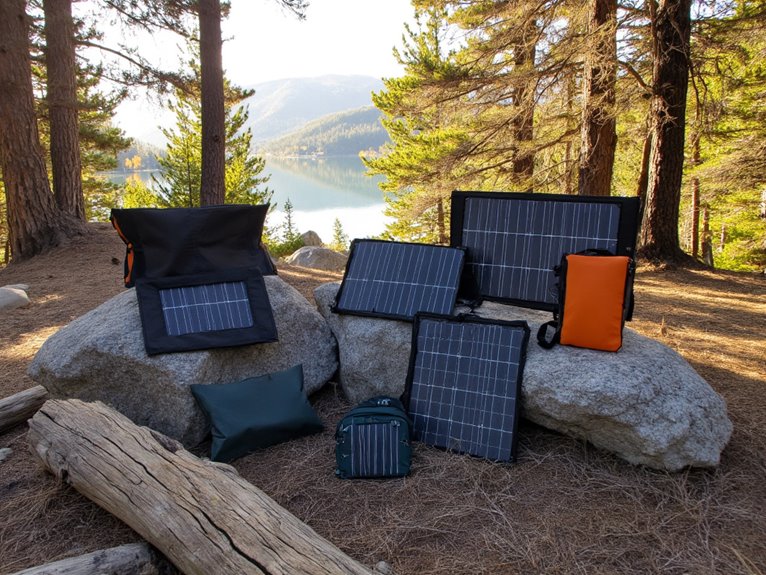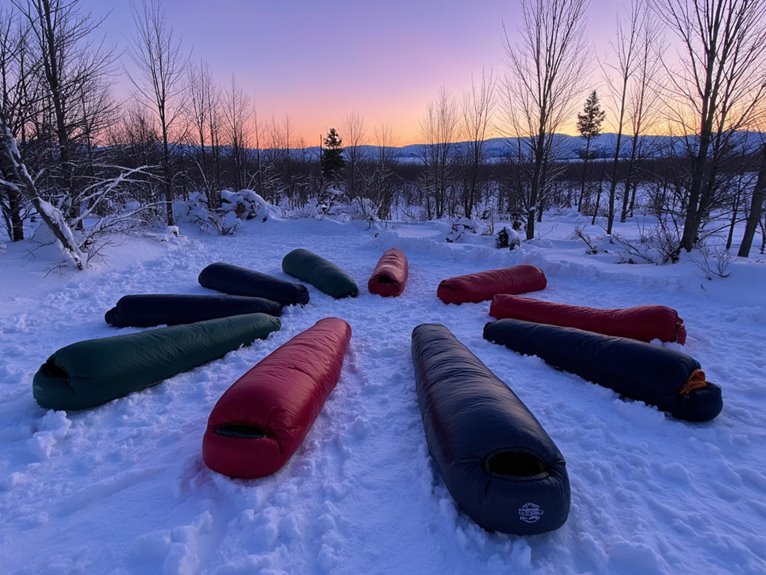Do Climbing Shoes Age?
Climbing shoes, like any other piece of gear, are subject to degradation over time, and their performance and durability will inevitably decline as they age. The rubber compounds that provide essential grip and support undergo degradation, influenced by factors like environmental conditions, usage, and storage. Exposure to direct sunlight, high temperatures, and humidity can accelerate the deterioration process. Proper storage, regular cleaning, and conditioning can help slow down the aging process. As climbing shoes naturally degrade, regular inspections can help identify signs of wear, allowing for prompt repair or replacement. To discover the secrets to extending their lifespan, look beyond the surface.
We are supported by our audience. When you purchase through links on our site, we may earn an affiliate commission, at no extra cost for you. Learn more. Last update on 9th January 2026 / Images from Amazon Product Advertising API.
Understanding Climbing Shoe Materials
Understanding Climbing Shoe Materials
Most climbing shoes are constructed from a combination of synthetic and natural materials, each chosen for its unique properties and benefits.
The upper material is often a blend of synthetic fabrics, such as nylon or polyester, which provide durability and resistance to abrasion.
Natural materials like leather or suede may be used for the toe cap or heel counter, adding flexibility and breathability.
The outsole, typically made from rubber compounds, provides grip and traction on various surfaces.
The midsole, often a thin layer of foam or plastic, adds support and cushioning.
By combining these materials, climbing shoes achieve a balance of comfort, performance, and durability.
Understanding the characteristics of these materials is essential for making informed decisions when selecting and maintaining climbing shoes.
How Age Affects Rubber Compounds
As climbing shoes age, the rubber compounds that provide essential grip and support undergo significant changes.
The rate at which rubber breaks down is influenced by various factors, including environmental conditions, usage, and storage.
Understanding the chemical degradation process that occurs over time is essential to appreciating the impact of aging on rubber compounds and, ultimately, shoe performance.
Rubber Breakdown Rate
Every climbing shoe owner knows that, over time, the rubber compounds that provide critical grip and support begin to deteriorate, a process that can be accelerated by factors such as storage conditions, usage, and environmental exposure.
This breakdown rate varies depending on the specific rubber compound and its formulation. Softer, stickier rubbers tend to degrade faster, while harder, more durable compounds may last longer.
Additionally, the way you store your shoes can impact the breakdown rate. Exposure to direct sunlight, high temperatures, and humidity can accelerate the deterioration process.
Understanding the factors that influence the rubber breakdown rate can help you take proactive steps to extend the life of your climbing shoes.
Chemical Degradation Process
The chemical degradation process, which involves the breakdown of polymer chains, is a key factor in the aging of rubber compounds, as it leads to a loss of molecular structure and, consequently, a decline in the material's performance.
This process occurs when rubber is exposed to oxygen, heat, and UV light, causing the polymer chains to break down and reform into new, less desirable compounds.
As a result, the rubber becomes brittle, loses its elasticity, and becomes more prone to cracking.
In climbing shoes, this degradation can lead to a loss of grip, reduced durability, and compromised performance.
Understanding the chemical degradation process is essential in developing strategies to slow down the aging process and extend the lifespan of climbing shoes.
Chemical Breakdown Over Time
As climbing shoes age, the chemical bonds that hold their components together begin to deteriorate, leading to a range of negative consequences.
One key aspect of this chemical breakdown is the degradation rate of polymers, which can substantially impact the shoe's overall performance.
Additionally, the weakening of bonding agents and the emergence of adhesive failure points can further compromise the shoe's integrity and reliability.
Polymer Degradation Rate
Rapidly, the polymer materials used in climbing shoes undergo a degradation process, breaking down over time due to various environmental and chemical factors.
This degradation rate is influenced by factors such as exposure to UV light, high temperatures, and chemical reactions with sweat and cleaning products.
As a result, the polymer chains begin to break down, leading to a loss of flexibility, stiffness, and overall performance.
The rate of degradation varies depending on the specific polymer used, with some materials being more susceptible to breakdown than others.
Understanding the polymer degradation rate is vital in determining the lifespan of climbing shoes and identifying strategies to slow down this process.
Bonding Agents Weaken
The bonding agents that hold the polymer chains together begin to unravel over time, compromising the structural integrity of the climbing shoe.
This process, known as chemical breakdown, occurs when the bonding agents, such as adhesives and plasticizers, start to degrade.
As these agents weaken, the polymer chains begin to separate, leading to a loss of strength and elasticity.
This breakdown can be accelerated by factors such as heat, light, and chemical exposure.
Over time, the once-strong bonds between the polymer chains begin to fail, causing the shoe's materials to deteriorate.
This degradation can lead to a noticeable decrease in the shoe's performance, making it less effective and potentially compromising the climber's safety.
Adhesive Failure Points
Chemical breakdown over time leads to adhesive failure points, where the bonds between the polymer chains and the bonding agents begin to fail, causing a cascade of structural weaknesses throughout the climbing shoe.
This degradation can occur due to exposure to heat, humidity, and UV light, which can accelerate the chemical breakdown process.
As a result, the adhesives that hold the shoe's components together start to deteriorate, leading to a loss of structural integrity.
This can manifest as delamination, cracking, or separation of the shoe's layers, compromising the shoe's overall performance and safety.
It's vital to monitor the condition of your climbing shoes and replace them when necessary to maintain peak performance and safety on the wall.
Effects of Storage on Shoes
When left untouched in storage for extended periods, climbing shoes can undergo significant deterioration, often leading to a noticeable decline in their overall performance and durability.
The primary culprit behind this deterioration is the relaxation of the rubber compounds, which can cause the shoes to lose their edge-holding capabilities and compromise their grip.
Additionally, storage conditions such as high temperatures, humidity, and exposure to direct sunlight can further exacerbate the degradation process.
To mitigate these effects, climbing shoes should be stored in a cool, dry place, away from direct sunlight.
Proper storage can help slow down the aging process, ensuring your shoes remain in prime condition for your next climbing adventure.
Impact of Maintenance on Longevity
Regular cleaning and conditioning of climbing shoes can substantially extend their lifespan by preventing the buildup of dirt and grime that can accelerate wear and tear.
A gentle soap and water solution can be used to wipe away dirt and debris, while a soft-bristled brush can help remove stubborn stains.
Conditioning products, such as leather conditioners or waterproofing sprays, can also help maintain the shoes' waterproofing and breathability.
By incorporating these simple maintenance tasks into your post-climb routine, you can notably prolong the life of your climbing shoes.
Additionally, regular inspections can help identify potential issues before they become major problems, allowing you to make timely repairs and extend the life of your shoes.
The Role of UV Light Exposure
Prolonged exposure to UV light can have a detrimental impact on the quality and longevity of climbing shoes, particularly those made from synthetic or leather materials.
When exposed to direct sunlight or artificial UV sources, the materials can degrade, leading to cracking, fading, and a loss of flexibility.
This degradation can compromise the shoe's performance, causing it to become less effective at providing support and grip.
To minimize the effects of UV exposure, it's essential to store climbing shoes in a shaded area or use UV-blocking storage bags.
Climbers can also consider applying a UV-resistant treatment to their shoes to extend their lifespan.
Do Climbing Shoes Degrade Naturally
Climbing shoes, regardless of their materials or usage, tend to degrade naturally over time due to the gradual breakdown of their components, leading to a decline in their performance and overall quality.
This natural degradation can manifest in various ways, including:
Material fatigue: The repeated stress and strain on the materials can cause them to weaken and lose their elasticity.
Adhesive degradation: The adhesives used to bond the different components can break down, leading to delamination and separation.
Material oxidation: The materials can react with oxygen, leading to a loss of strength and flexibility.
As a result, even with proper care and maintenance, climbing shoes will naturally degrade over time, affecting their performance and overall quality.
Comparing New Vs. Old Shoes
Every seasoned climber has, at some point, wondered whether their trusty old shoes still have what it takes to tackle the toughest routes, or if it's time to invest in a brand-new pair.
When comparing new vs. old shoes, it's essential to assess their performance, comfort, and overall condition.
New shoes typically offer better grip, support, and responsiveness, making them ideal for challenging climbs.
Old shoes, on the other hand, may show signs of wear and tear, affecting their performance and comfort.
A thorough inspection of your old shoes can reveal signs of degradation, such as worn-out soles, stretched-out uppers, or loose stitching.
Extending the Life of Your Shoes
To get the most value out of your investment, it's worth exploring ways to extend the life of your shoes, from proper storage and cleaning to regular maintenance and repair.
By taking care of your shoes, you can prevent premature wear and tear, and confirm they continue to perform at their best.
Store them properly: Keep your shoes in a cool, dry place away from direct sunlight to prevent fading and degradation.
Clean them regularly: Remove dirt and debris with a soft brush and mild soap to prevent damage to the materials.
Condition the leather: Apply a leather conditioner to maintain the suppleness and flexibility of the leather, guaranteeing it remains strong and durable.





